Disclosure: This article contains affiliate links. We may earn a commission from purchases at no extra cost to you, which helps our travel content.
The Kalahari stretches before me like a living, breathing entity – not the barren wasteland many imagine, but a complex ecosystem pulsing with life adapted to some of Earth's harshest conditions. As a conservation scientist, I've studied desert ecosystems theoretically, but spending a month immersed in this 900,000 square kilometer wilderness has transformed my understanding of resilience, both environmental and personal. Winter in the Kalahari (June-August) offers the perfect balance: manageable daytime temperatures, wildlife concentrated around scarce water sources, and nights beneath the most spectacular star-filled skies I've ever witnessed.
Preparing for the Kalahari's Extremes
My scientific background prepared me for the ecological aspects of the Kalahari, but surviving here requires practical preparation beyond academic knowledge. Winter brings dramatic temperature fluctuations – pleasantly warm days (20-25°C) followed by bitterly cold nights that can drop below freezing. This thermal variability isn't just uncomfortable; it's potentially dangerous without proper gear.
I invested in a high-quality sleeping bag rated for -10°C, which proved essential during those frigid desert nights. Equally important was my water filtration system – despite traveling in winter, dehydration remains the desert's most insidious threat. The collapsible design saved precious pack space while ensuring I could safely filter water from the occasional pan or waterhole.
Layering became my daily ritual: lightweight, moisture-wicking base layers, insulating mid-layers, and a windproof outer shell. The Kalahari's winter winds can be surprisingly biting, especially in the Central Kalahari Game Reserve where the landscape offers little shelter from the elements.
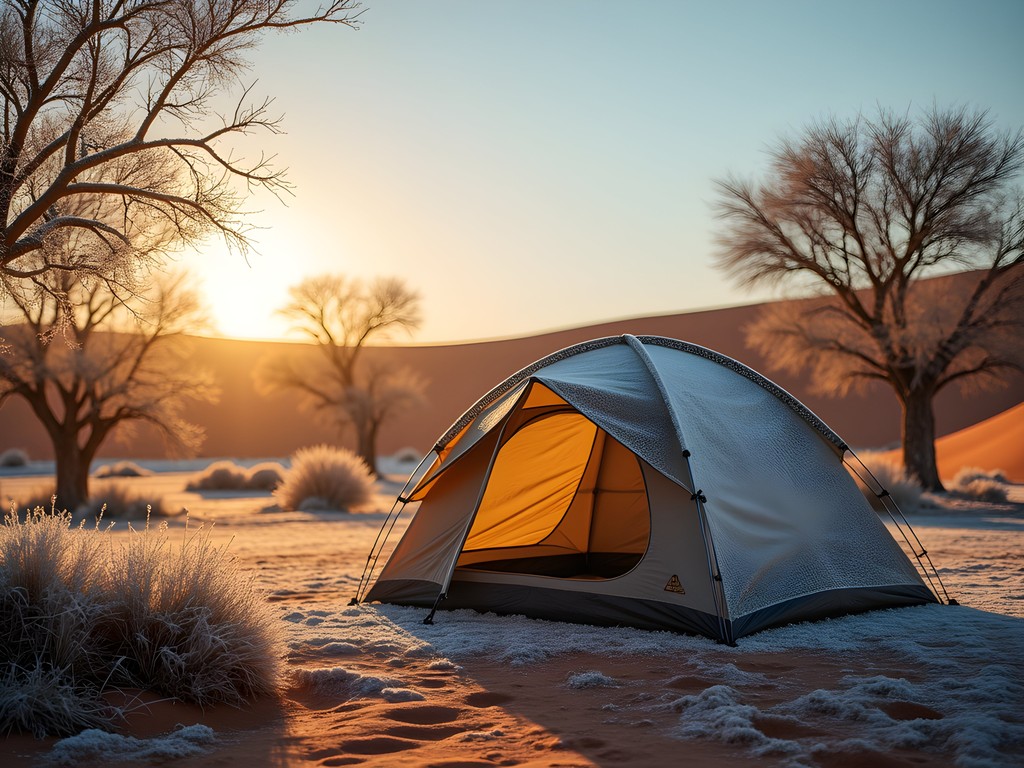
💡 Pro Tips
- Pack clothing for temperature extremes – layers are essential for 30°C+ temperature swings between day and night
- Bring at least 4-5 liters of water capacity per day and know how to find and purify natural sources
- Include a comprehensive first aid kit with specific additions for desert environments: electrolytes, anti-diarrheal medication, and treatments for heat-related conditions
Wildlife Encounters: Conservation Insights
My conservation background gave me a unique lens through which to observe the Kalahari's remarkable wildlife adaptations. Winter concentrates animals around limited water sources, creating exceptional viewing opportunities balanced with ethical considerations about minimizing our impact on these crucial resources.
The desert-adapted species here represent evolutionary masterpieces – from the gemsbok (oryx) with its sophisticated nasal cooling system to the resourceful meerkats whose complex social structures ensure group survival. I spent three unforgettable days observing a meerkat colony near Nossob Camp, documenting their sentry behaviors and foraging strategies as part of my personal research.
Tracking became an essential skill, one I developed with the guidance of San guides whose ancestral knowledge far surpasses any academic understanding. Their ability to read the landscape – identifying hours-old leopard tracks or predicting animal movements based on subtle environmental cues – demonstrated the depth of indigenous ecological knowledge that deserves greater recognition in formal conservation efforts.
For wildlife photography, my telephoto zoom lens proved invaluable, allowing respectful distance while capturing intimate behavioral moments. I paired this with a sturdy tripod that withstood the Kalahari's challenging conditions – lightweight enough for trekking yet stable against the persistent desert winds.

💡 Pro Tips
- Always maintain respectful distances from wildlife – use binoculars or telephoto lenses rather than approaching animals
- Visit waterholes during early morning or late afternoon when wildlife activity peaks
- Learn basic tracking skills to enhance your wildlife spotting abilities – look for fresh tracks near water sources
Cultural Immersion: Learning from the San People
The ecological story of the Kalahari cannot be separated from its cultural heritage. My most profound experiences came through a week-long cultural immersion with San communities near Ghanzi, where the intersection of traditional ecological knowledge and modern conservation practices became vividly apparent.
The San have inhabited this challenging landscape for over 20,000 years, developing sophisticated survival techniques that modern science is only beginning to appreciate. I participated in traditional food gathering walks, learning to identify the 'living pharmacy' of medicinal plants that thrive in seemingly inhospitable conditions. One elder showed me how certain roots store water even during drought, a potential research avenue for climate adaptation studies.
Communication presented challenges despite my preparation with a language guide. The click consonants of the San languages required practice and patience, but these efforts to learn even basic phrases significantly deepened my connections with community members. I documented these interactions in my weatherproof notebook, which withstood the harsh conditions while preserving valuable field notes.
Ethical considerations are paramount when engaging with indigenous communities. I arranged my visit through community-led tourism initiatives that ensure benefits flow directly to local people rather than outside operators. This approach aligns with my commitment to conservation models that center indigenous rights and knowledge systems.
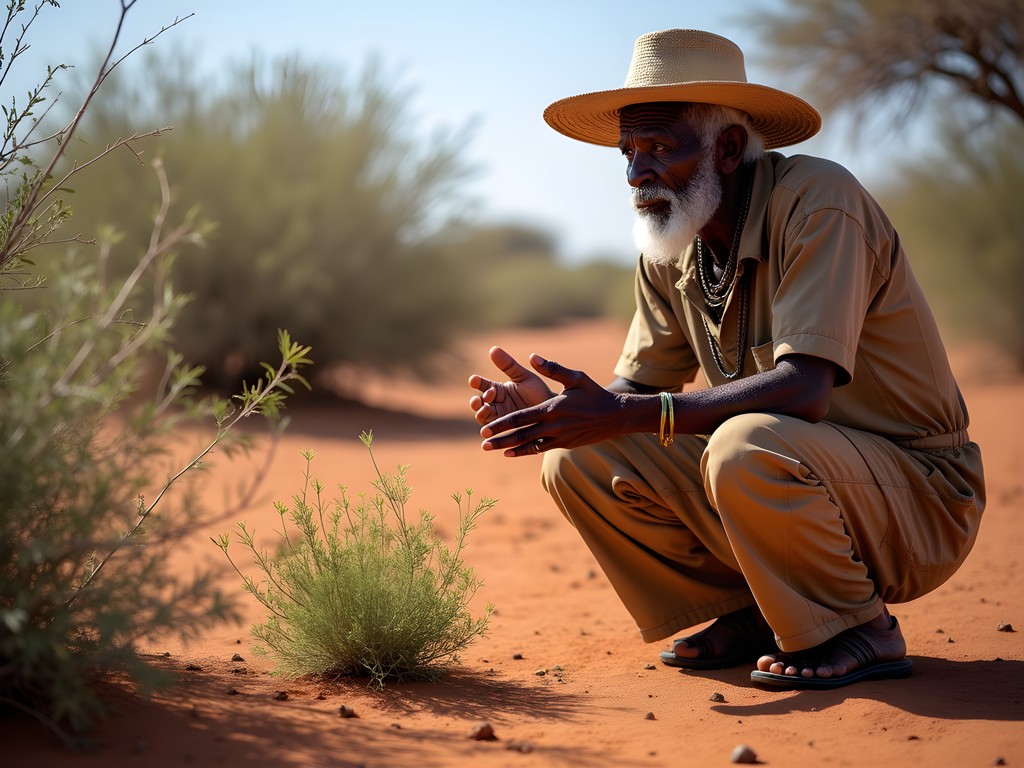
💡 Pro Tips
- Arrange cultural experiences through community-led organizations rather than commercial operators
- Learn basic greetings in local languages – even simple efforts show respect and open doors
- Be mindful of photography etiquette – always ask permission before photographing people or cultural activities
Navigation and Survival Techniques
The vastness of the Kalahari demands serious navigation skills – this isn't a landscape forgiving of errors. Even as an experienced traveler, I found myself humbled by the challenges of orientation in an environment where landmarks can be subtle and distances deceptive.
I relied on multiple navigation systems for redundancy: a traditional compass as my primary tool, backed by a GPS device that also provided crucial emergency communication capabilities. The satellite messaging feature offered peace of mind during remote sections of my journey, allowing location sharing and emergency contact despite being far beyond cellular coverage.
Understanding celestial navigation proved unexpectedly valuable. The Kalahari's clear winter skies reveal a stunning array of stars, and learning to identify key constellations from both northern and southern hemispheres provided reliable orientation points. The Southern Cross became my nightly companion, its position guiding my understanding of direction when other methods seemed uncertain.
Water location and management dominated my daily planning. I mapped potential water sources before departing each camp, carried purification methods for natural sources, and learned to recognize subtle landscape indicators that might suggest subsurface water. The San guides taught me to identify plants like the Shepherd's Tree, whose presence often indicates water not far below the surface – knowledge that connects botanical understanding with practical survival.
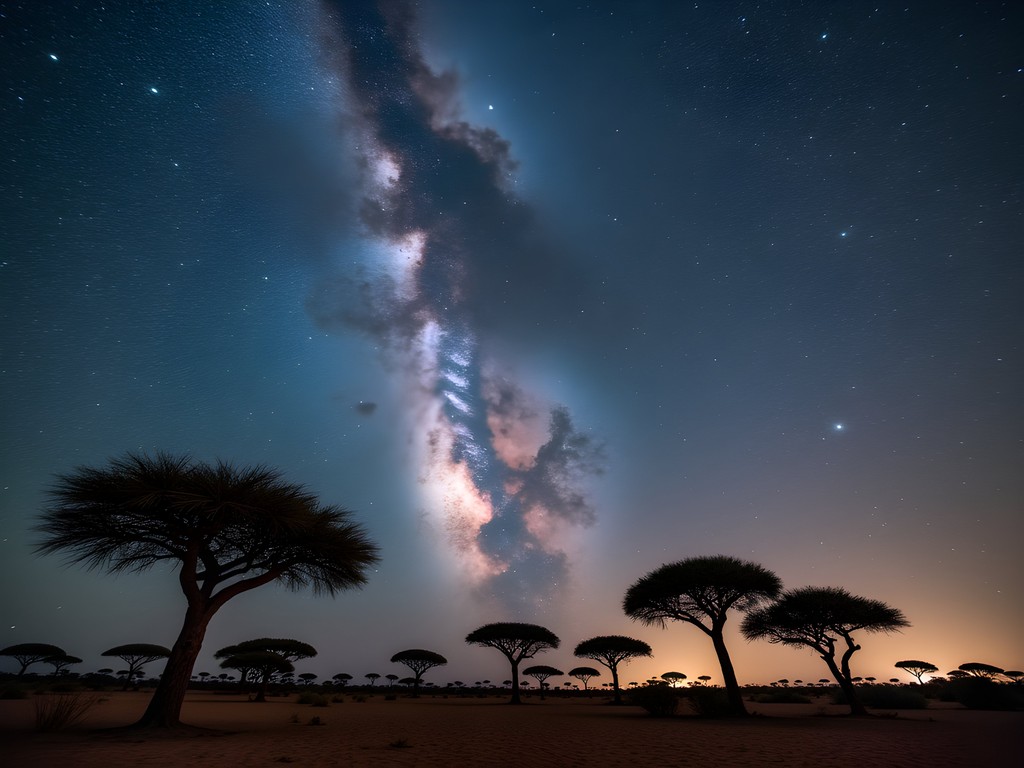
💡 Pro Tips
- Always have multiple navigation methods – don't rely solely on electronic devices
- Learn to identify water-indicating plants and landforms specific to desert environments
- Plan each day's route around known water sources and establish clear emergency protocols
Sustainable Desert Travel: Minimizing Impact
Traveling responsibly through fragile desert ecosystems requires deliberate choices that align with conservation principles. The Kalahari may appear robust, but its slow regeneration rates mean that our impacts can persist for decades.
I committed to a strict 'leave no trace' approach, carrying out all waste (including biodegradable items that decompose slowly in arid environments) and avoiding off-track driving that damages delicate soil crusts and vegetation. For personal hygiene, I relied on biodegradable soap used sparingly and always at least 100 meters from any water source.
Energy needs presented another sustainability challenge. My solar charger eliminated the need for disposable batteries while harnessing the Kalahari's abundant sunshine. This lightweight panel easily attached to my backpack during day hikes, providing sufficient power for essential devices.
Water conservation became second nature – I developed systems for reusing water whenever possible and carried a shower bag that required minimal water while providing the psychological boost of occasional cleanliness. The black material absorbed solar heat effectively, delivering surprisingly comfortable showers even in winter conditions.
My professional background in conservation science heightened my awareness of how individual choices contribute to cumulative impacts. Throughout my journey, I documented evidence of climate change effects on this sensitive ecosystem – shifting rainfall patterns, changes in vegetation distribution, and altered wildlife behaviors – observations that will inform my ongoing research and advocacy work.

💡 Pro Tips
- Carry out ALL waste – even seemingly biodegradable items decompose extremely slowly in desert environments
- Minimize water usage through simple practices: wet wipes for quick cleaning, reusing cooking water for washing, and planning meals that require minimal water
- Support conservation initiatives and community-based tourism that creates economic alternatives to unsustainable resource extraction
Final Thoughts
A month in the Kalahari fundamentally reshapes your relationship with landscape, water, and time. This isn't merely a travel destination but a profound teacher of resilience and adaptation – lessons increasingly relevant in our climate-challenged world. The experience has deepened my conservation work, providing lived understanding of how desert ecosystems function and the sophisticated knowledge systems developed by those who have called this place home for millennia.
For those considering their own Kalahari journey, prepare thoroughly but remain open to the desert's lessons. The challenges are real – from extreme temperature fluctuations to navigation complexities – but so are the rewards: wildlife encounters unmarred by crowds, night skies untouched by light pollution, and the rare privilege of experiencing one of Earth's most remarkable environments on its own terms.
As I integrate these experiences into both my personal worldview and professional research, I'm reminded that true conservation must bridge scientific understanding with indigenous knowledge and direct experience. The Kalahari doesn't yield its secrets easily, but for those willing to approach with respect and humility, it offers insights available nowhere else on Earth. This vast wilderness isn't empty at all – it's filled with life, knowledge, and adaptations that may prove crucial to our collective future.
✨ Key Takeaways
- The Kalahari winter (June-August) offers ideal conditions for wildlife viewing with moderate daytime temperatures and animals concentrated around water sources
- Indigenous knowledge from San communities provides invaluable insights for both survival and conservation science
- Proper preparation with appropriate gear and navigation tools is essential for safety in this remote environment
- Sustainable travel practices are crucial in preserving the fragile desert ecosystem
📋 Practical Information
Best Time to Visit
Winter (June-August)
Budget Estimate
$3,000-5,000 USD for one month (excluding flights)
Recommended Duration
Minimum 2 weeks, ideally 3-4 weeks
Difficulty Level
Challenging




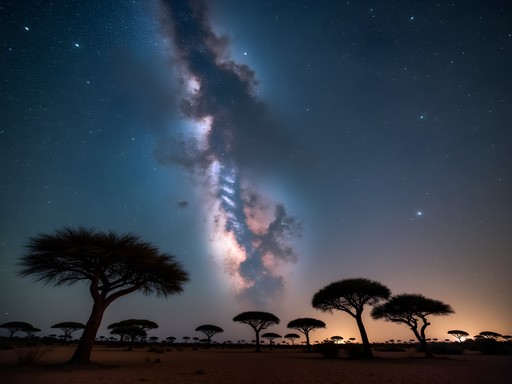
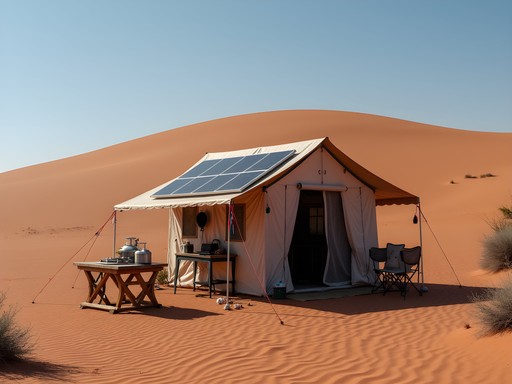



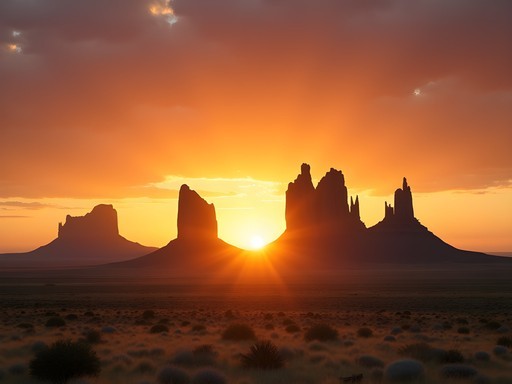
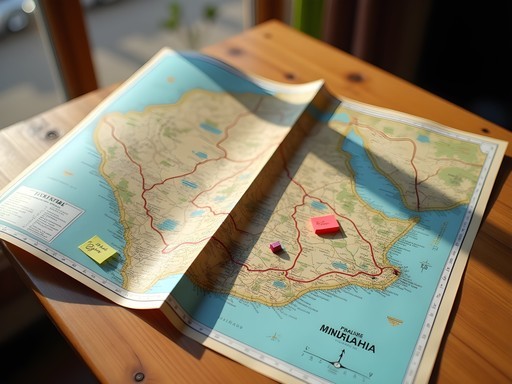




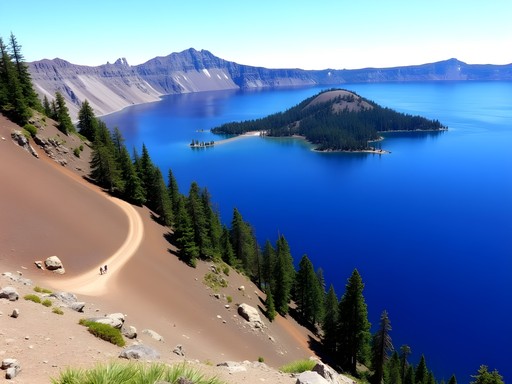
Comments
waveking3669
Just finished reading this after bookmarking it last week. Your section on cultural immersion with the San people hit home - when I visited last year, our guide Nxau spent an afternoon showing us how to make fire without matches and find water-bearing roots. It completely changed how I view survival skills! Did you get to try the trance dancing? Our group was invited to observe one night and it was honestly one of the most powerful cultural experiences I've ever had. Still thinking about it months later.
Megan Martin
Emilia, this is exceptional content. I'm currently researching sustainable tourism initiatives in Botswana for a client project, and your insights on conservation efforts in the Kalahari are particularly valuable. The balance you struck between adventure tourism and cultural respect is exactly what the industry needs more of. Would you mind sharing which tour operators you found to be most committed to ethical practices and fair compensation for local communities? This information would be immensely helpful for my recommendations.
Emilia Tucker
Thanks Megan! I worked primarily with Uncharted Africa Safari Co. and Botswana Guides Association members. Both have strong ties to local communities and transparent compensation practices. Happy to email you more detailed info if helpful for your project!
Megan Martin
That would be tremendously helpful, Emilia. I'll reach out via your contact page. Thank you!
vacationexplorer
Planning to visit Botswana next year - would you recommend the Kalahari for a first-time Africa traveler? Or should I start with something more accessible?
Emilia Tucker
Great question! If it's your first time in Africa, I'd suggest starting with a few days in the Okavango Delta area first, then adding 3-4 days in the Kalahari with a good guide. The contrast between the two ecosystems is incredible, and the Delta is a bit more forgiving for beginners.
vacationexplorer
Thanks so much! That sounds like perfect advice - will definitely look into that combination!
journeyking
Pro tip: bring twice as many socks as you think you need. Sand gets EVERYWHERE and clean socks become luxury items after a week!
Douglas Bradley
Absolutely second this! And good gaiters make a world of difference too.
Jean Wells
Fascinating article, Emilia. Your approach to the Kalahari as an ecosystem rather than merely a landscape provides important context often missing in travel narratives. Having conducted research on water conservation practices across several desert regions, I found your insights on navigation techniques particularly valuable. The San people's knowledge of seasonal water sources represents generations of accumulated wisdom that modern GPS simply cannot replicate. I would add that travelers should consider the ethical implications of their visits - the Kalahari's fragile ecosystem faces increasing pressure from climate change and tourism. Did you observe any conservation initiatives during your month there that seemed particularly effective?
Emilia Tucker
Great point about the ethical considerations, Jean. I was impressed by the community-based conservation program near Ghanzi that employs former hunters as guides and researchers. They're doing remarkable work tracking predator populations while providing sustainable livelihoods.
Bryce Diaz
Emilia, your post took me right back to my own Kalahari journey three years ago! There's something about that landscape that gets under your skin, isn't there? I still remember my first night camping under that impossibly vast sky - never seen stars like that anywhere else. One tip for anyone planning similar adventures: the temperature swings are NO joke. I went in with my trusty layering system which was a lifesaver when the thermometer plunged at night. Your section on learning from the San people was particularly meaningful - their sustainable relationship with that harsh environment has so much to teach us modern travelers.
waveking3669
Those temperature drops are intense! I was there in August last year and went from sweating to shivering in what felt like minutes after sunset.
photowalker
Those night sky photos are INSANE! What camera setup did you use?
Emilia Tucker
Thanks! Sony A7III with a 24mm f/1.4 lens. The Kalahari has almost zero light pollution - it's a photographer's dream!
coffeebuddy
Those sunset photos are absolutely stunning! 😍
tripguy
Wow Emilia, your description of the Kalahari as a 'living, breathing entity' really resonates! I did a shorter 10-day trek there last year and was blown away by how much life exists in what looks like emptiness at first glance. The San people were incredible guides - did you learn any tracking techniques from them? Their ability to read the landscape is mind-blowing.
Emilia Tucker
Thanks @tripguy! Yes, the tracking techniques were incredible - I learned to identify several animal tracks and even how to find water sources by following certain birds. Still practicing those skills!
tripguy
That's awesome! I tried the bird-following technique once and ended up completely lost for an hour 😂 Definitely takes practice!
freelegend
I spent two weeks in the Kalahari last year but didn't get to experience the cultural immersion you described. Feels like I missed out on something profound. Your section about learning survival techniques from the San people was fascinating. Did they teach you any specific plant identification for finding water sources?
Emilia Tucker
They showed me several tuber plants that store water, particularly the bi!naa root (I'm probably spelling that wrong). They can extract nearly a cup of water from one large root. It's incredible knowledge that's been passed down for thousands of years.
Venture X
Premium card with 2X miles, $300 travel credit, Priority Pass